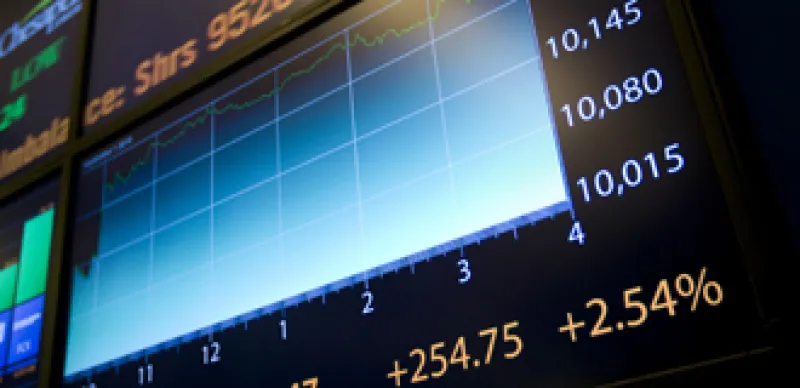It’s almost unimaginable in this age of fiber optic lines, satellite transmissions and wireless everything that physical space can still present barriers to competition. But in the race to place trades in low latency/ high frequency environments, the ability to shave 115 miles off the journey information must travel from Chicago to New York, it would save two milliseconds from the round trip and place a high frequency firm at a huge advantage over its competition.
Don’t worry if none of this sounds familiar. The methods for reducing latency are still as cloaked in secrecy today as they were in Napoleonic times when bankers Francois and Joseph Blanc bribed operators of Claude Chappe’s 1793 invention, the semaphore telegraph, to tip them as to whether the Paris Bourse was trading up or down. By the time they were caught, in 1834, the brothers had made a bundle. They had simply to note whether packages arriving by coach from Paris to Bordeaux were wrapped in gray or white paper, and instantly they’d knew whether to buy or sell their shares — nearly a day before the papers could carry the news. Today, latency secrets are more confined to who has the best equipment or where the best unused telecommunication lines are, than unpublished market news.
The hidden weapons of big name hedge funds and proprietary trading desks at mainly sellside firms are closely guarded, says Kevin McPartland, an analyst with the Tabb Group, and author of “Long-Distance Latency: Straightest and Fastest Equals Profit” (June 2010). For the past decade, firms have pursued a combination of sophisticated trading technology and faster networks in a race to the top. Still, up until this year’s Flash Crash, the public was largely unaware. “With things calming down in equities, the topic’s been brought to the top of people’s minds,” says McPartland.
“Ten years ago firms would rely on telecom providers to advise them,” he says. Now the same firms are hiring away those experts to get the jump on the competition and also ensure it won’t figure out their strategy. Telecom experts are paid well for their closed-mouth discretion, sources tell us. Also fueling the need for secrecy is that although “there’s tons of connectivity,” as McPartland says, there is “very little in the fastest” modes. One reason is that between trading centers such as New York to Chicago and London to Frankfurt, there are many places where lines can’t be dug — through mountains, across rivers, under churches, for example.
Dig, you ask? What about satellites, microwaves, wireless communications? “Radio, in theory, could work but bandwidth is so low; it doesn’t come close to enough space to support trading volumes and trade data,” says McPartland. Cable has come a long way from copper lines to the latest innovations in hair-fine fiber optics, but there’s a finite amount that has actually been laid. And fiber optics need a clear line of sight to carry light from one point to the next. Satellites are sexy, but time is lost whipping data through the sky and back to earth again. So the push is on to find the shortest, fastest routes.
“You only need to be a tiny bit faster than the other guy,” Kevin Formby tells his clients. The new vice president for business development at Endace, an Atlanta-based contractor that captures and analyzes network traffic in order to evaluate the trading performance of their clients’ platforms. “There are always clever people out there, especially when there’s an awful lot of money to be made,” says Formby, a transplanted Brit from Manchester. People have found the way around fiber optics by using repeating cables, he notes. And, microwave relays using dish antenna can bring that technology up to the speed of light. The option of adding towers to boost microwave signal speed also is not off the table.
But how fast is fast? It takes us 300 milliseconds to blink an eye, says McPartland. A price tick takes less — only 16.5 milliseconds — to race from New York to Chicago and back. One-way takes only 7 milliseconds — 7, 1000th of a second! On August 16th, Spread Networks Inc., a privately held telecommunications provider, announced it had broken the record, with an ultra low-latency rate between the two cities: a round trip speed under 13.33 milliseconds. To achieve those results, Spread, based in Ridgeland, MS, worked with optical equipment manufacturers ADVA Optical Networking, Ciena Corporation and Infinera.
And then what? How fast can one act on the information? BATS Exchange, which claims to have the lowest latency numbers in the industry boasts an average order lifetime of 8 milliseconds. And, says BATS, a 99.9 percent “fill” — which includes the time to accept, process and acknowledge a member order — within 1.3 milliseconds.
Competitors will go to such lengths as buying buried fiber, unlit, called dark fiber, and using their staff to build their own boxes for transmitting signals at either end of the line, says Formby. The dark fiber supplier will often recommend box manufacturers that they’ve tested, he adds. These options are definitely not for the smaller players, he notes. This is “just part of the arms race. It makes for a little bit quicker system than the other guy’s got.” The next horizon? Microseconds or millionths of a second. It’s not out of reach for these “high spending, high trading, winner take all professionals,” says Formby. “Every day they change their algorithms based on how they did the day before, analyzing the data and changing the programs, because their competitors are doing the same thing.”
So the only factor in question seems to be, does the potential reward equal the cost of doing whatever? “In most cases,” says Formby, “they’ll spend the money on that semaphore.”






